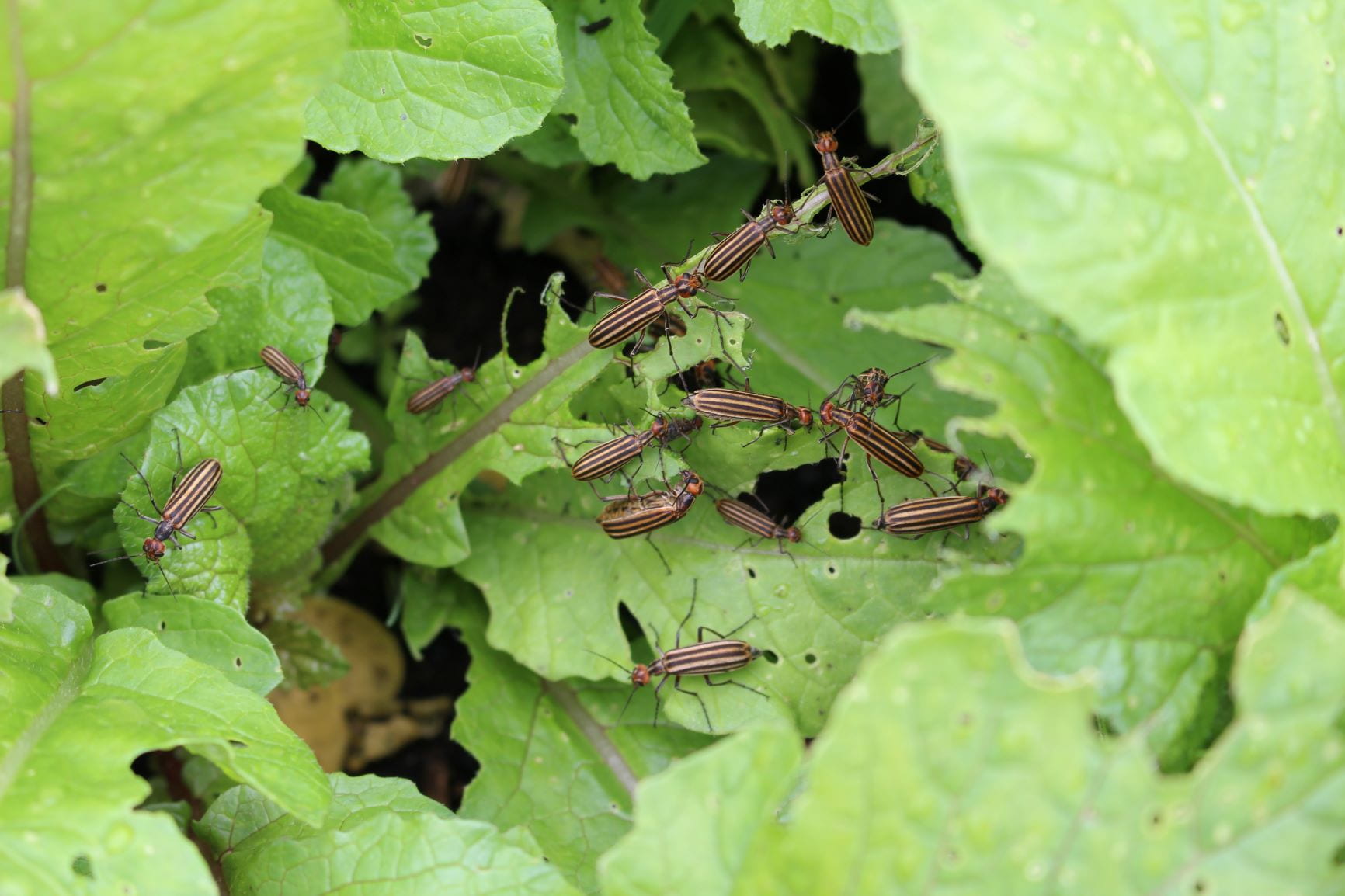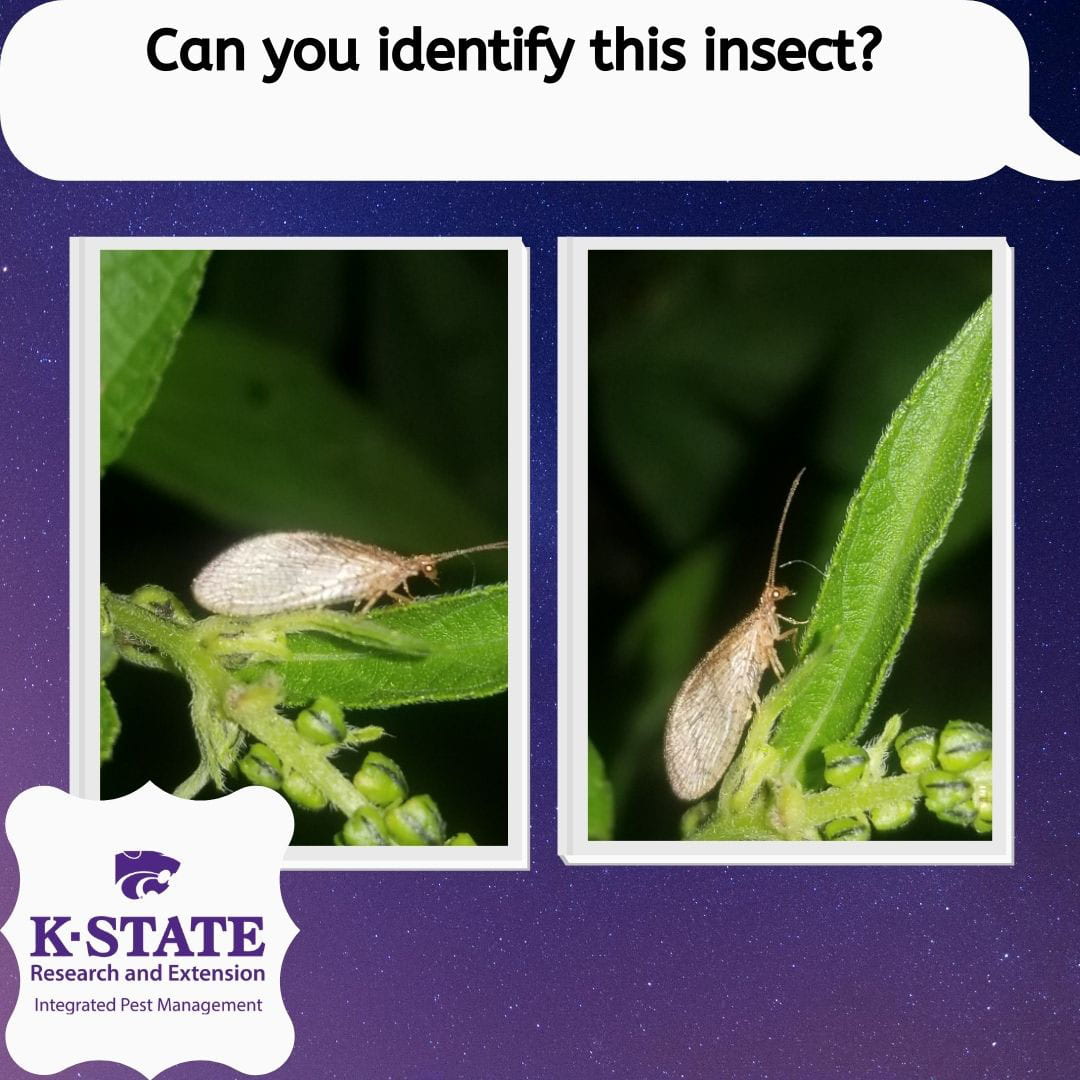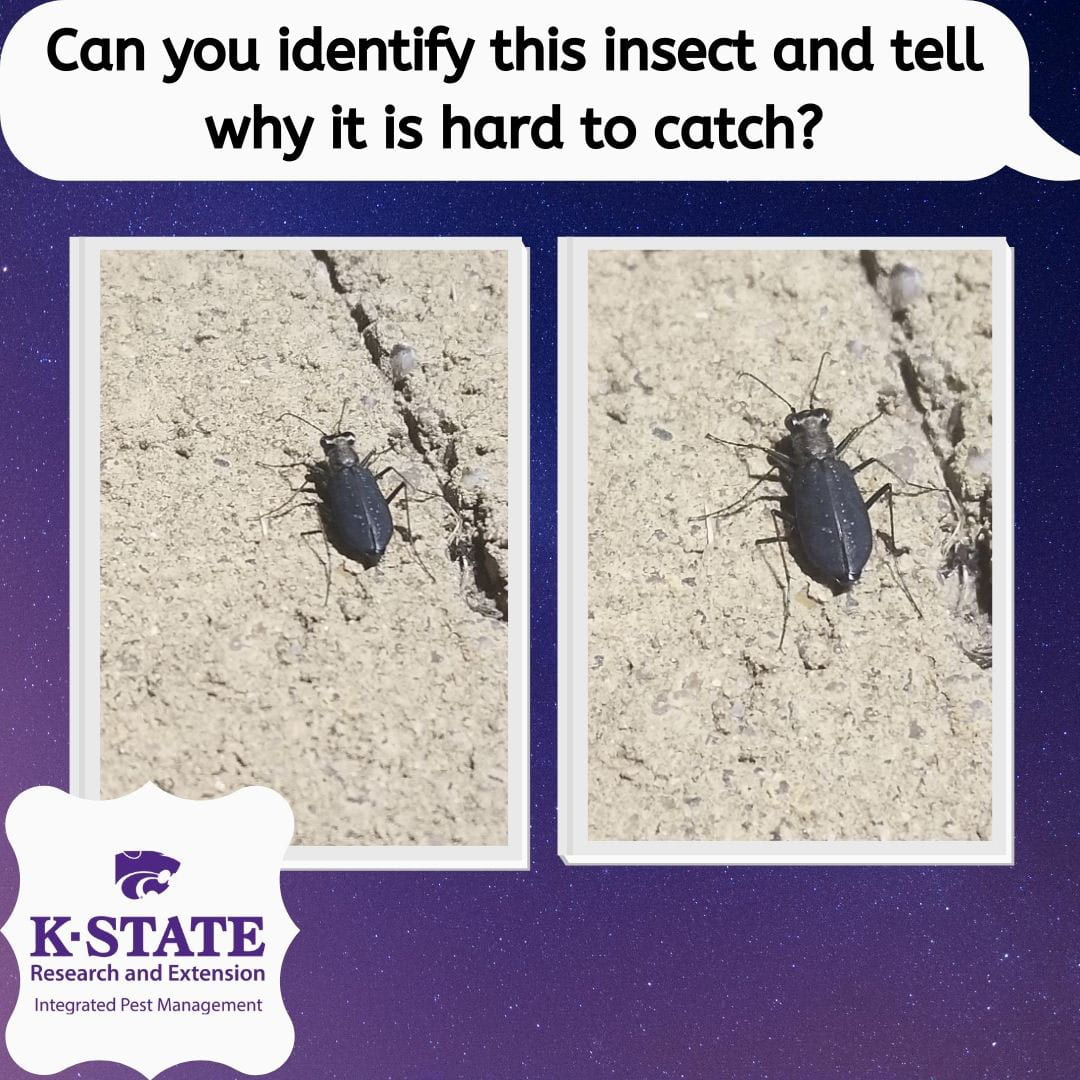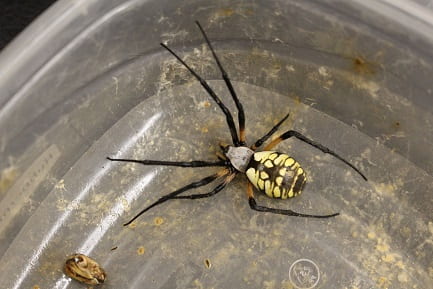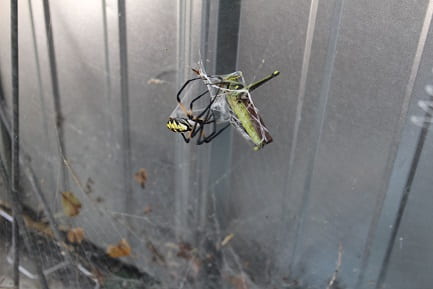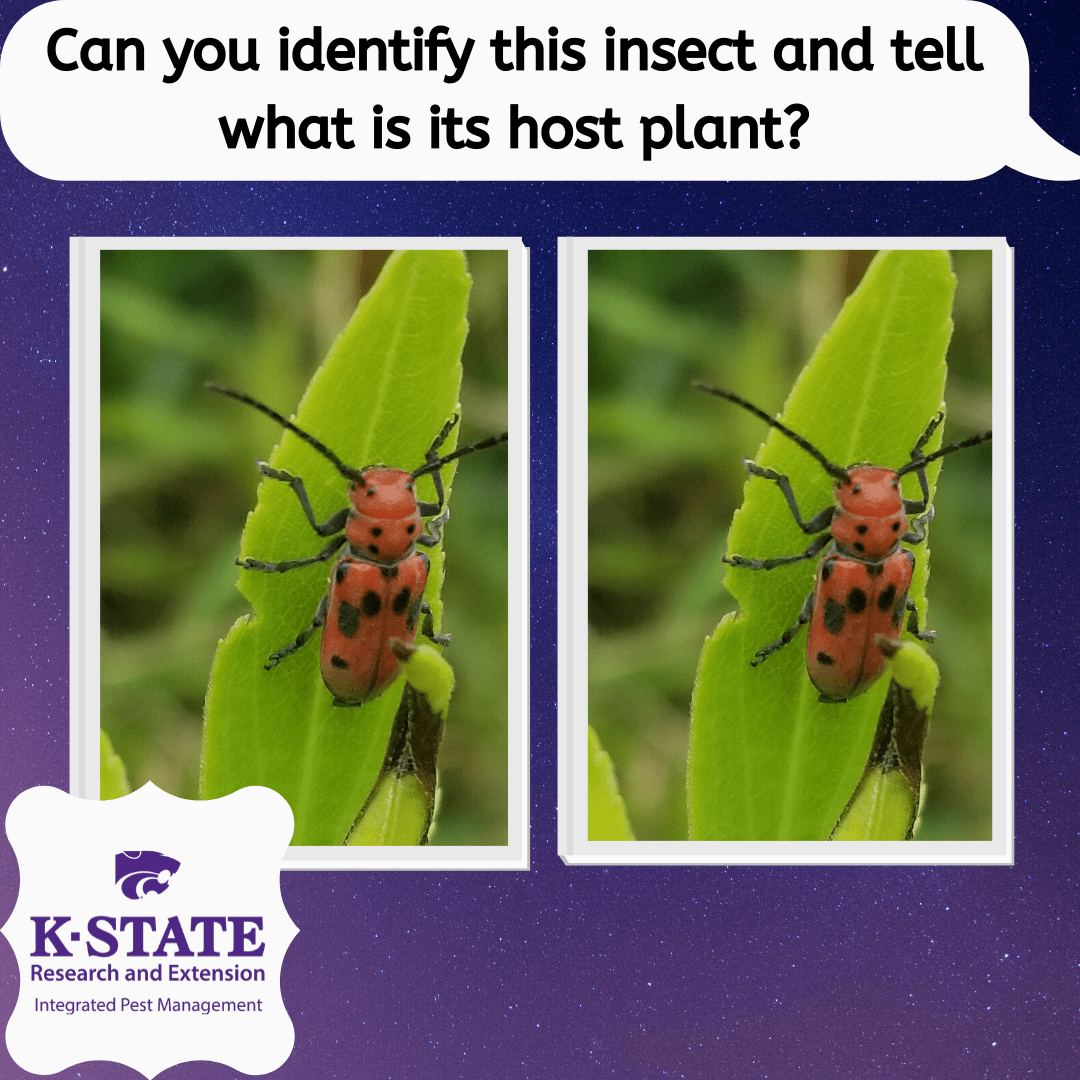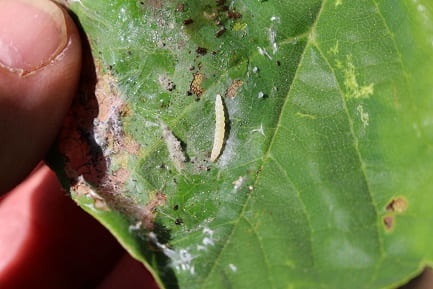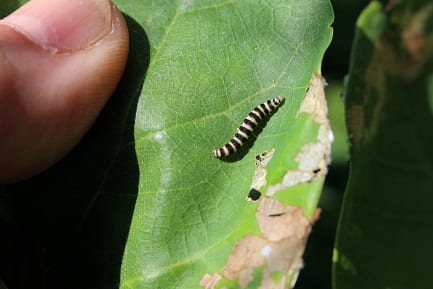–by Dr. Raymond Cloyd
The threestriped blister beetle, Epicauta lemniscata, is an insect pest that feeds on a wide-range of vegetable crops including: bean, beet, carrot, cabbage, corn, eggplant, melon, mustard, pea, pepper, potato, radish, spinach, squash, tomato, and turnip. Adults are slender, brown to yellow-gray, 1/2 to 3/4 (12.7 to 19.0 mm) inches long, with approximately five black stripes extending lengthwise on the wing covers or abdomen (Figure 1). In addition, there are two spots on the head and two black stripes on the thorax (middle section of body). The thorax is narrower than the head and abdomen, which is a distinguishing morphological characteristic used for identification of blister beetles.
Figure 1. Threestriped Blister Beetle Adult (Raymond Cloyd, KSU)
In general, adults are present from May through October. The adults are active in the morning and late afternoon, and seek shelter during mid-day to minimize exposure to sunlight. Females lay clusters of 100 to 2,000 eggs in the soil. Larvae emerge (eclose) from eggs and feed on grasshopper eggs. Eventually, the larvae transition into pupae. The threestriped blister beetle overwinters as a late-instar larva in the soil. In spring, adults emerge from the soil and feed on vegetable plants causing damage by consuming leaf tissue with their chewing mouthparts. They tend to aggregate in groups when feeding (Figure 2). There are two generations per year in Kansas.
Figure 2. Threestriped Blister Beetle Adults Feeding (Raymond Cloyd, KSU)
Management of threestriped blister beetle adult populations involves placing floating row covers over susceptible vegetable crops ensuring that the sides are fastened down to prevent adults from crawling underneath the floating row cover. Physical removal by hand-picking may be effective; however, be sure to wear leather gloves because adults emit a substance called cantharidin, which protects them from attack by predators, but can cause blisters to form on the skin of humans. Removing weeds within the vegetable garden will eliminate potential alternative food sources; especially pigweed, Amaranthus spp., which is highly susceptible to adult feeding. Foliar applications of insecticides will kill threestriped blister beetle adults; however, multiple applications will be required during the growing season to prevent plant damage.

